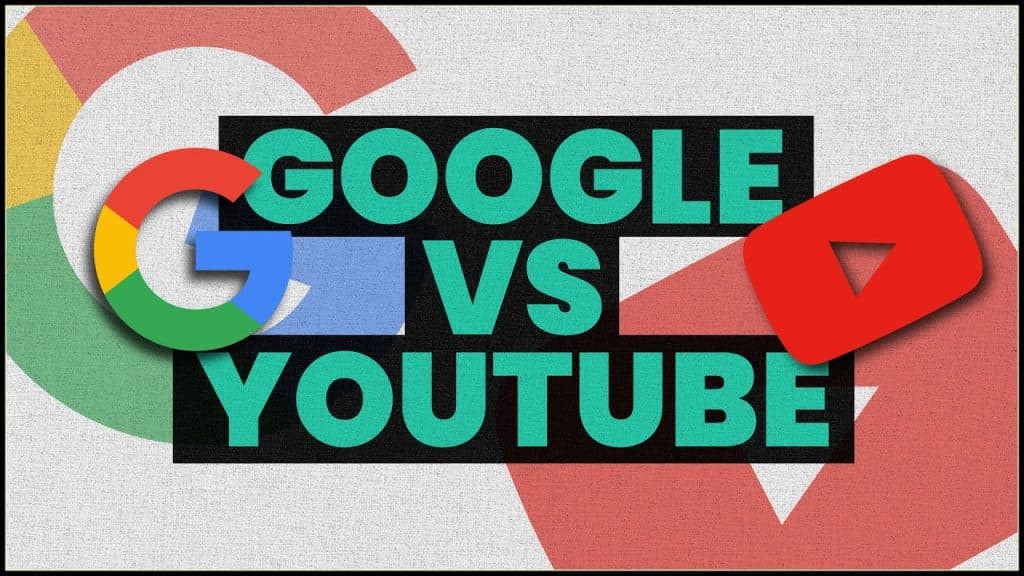Mastering SEO for Google vs. YouTube: Key Differences and Winning Strategies

When optimizing for SEO for Google vs. YouTube, understand the key differences in algorithms and user engagement metrics.
Google values backlinks and content relevance, while YouTube prioritizes user engagement like watch time and shares.
Tailor strategies to each platform for success. Remember, grasping these nuances is important for maximizing visibility and impact on both Google and YouTube.
Table of Contents
Algorithm Differences
When optimizing for SEO on Google versus YouTube, understanding the algorithm differences is essential for achieving the best results.
Google’s search algorithm prioritizes factors like backlinks, domain authority, and content relevance to keywords. It values websites with high-quality, authoritative content that provides valuable information to users.
On the other hand, YouTube’s algorithm focuses more on user engagement metrics such as watch time, likes, comments, and shares. It aims to promote videos that keep viewers on the platform longer and encourage interaction.
To optimize for Google, you should focus on creating keyword-rich content, obtaining high-quality backlinks, and improving your website’s overall authority.
Conduct keyword research to understand what users are searching for and incorporate those terms naturally into your content. Additionally, invest in link-building strategies to increase your site’s credibility in Google’s eyes.
For YouTube, prioritize creating engaging videos that keep viewers watching until the end.
Encourage likes, comments, and shares to boost your video’s visibility. Pay attention to trends and user behavior on the platform to tailor your content for maximum engagement.
By understanding these algorithmic variances, you can tailor your SEO strategies effectively for each platform.
Keyword Strategy Variances
To optimize effectively for Google and YouTube, it’s important to understand the divergent approaches required in keyword strategy implementation for each platform.
When it comes to keywords, Google and YouTube have different algorithms and user behaviors that must be taken into account.
Here are some key points to take into consideration:
- Search Intent: Google users often have informational search intent, looking for answers or solutions. In contrast, YouTube users typically have more entertainment or tutorial-based search intent, seeking videos to watch or learn from.
- Long-Tail Keywords: While long-tail keywords are essential for Google SEO due to high competition, they’re equally crucial for YouTube SEO. Long-tail keywords can enhance the visibility of your content on both platforms.
- Engagement Metrics: Google focuses on metrics like click-through rate and bounce rate, while YouTube prioritizes metrics such as watch time and engagement. Tailoring your keyword strategy to optimize these metrics is crucial for success on each platform.
Content Optimization Varied Approaches
Understanding the distinct keyword strategies for Google and YouTube sets the stage for exploring the varied approaches to content optimization for each platform.
When optimizing content for Google, focus on creating in-depth, thorough articles that cover the topic extensively.
Google values expertise, authority, and trustworthiness (E-A-T), so guarantee your content reflects these qualities.
Incorporate relevant keywords naturally throughout the text to improve visibility in search results. Utilize meta tags, headings, and structured data to provide search engines with context about your content.
On the other hand, YouTube optimization involves creating engaging video content.
Prioritize high-quality visuals, compelling storytelling, and clear calls to action. Optimize video titles, descriptions, and tags with relevant keywords to enhance discoverability.
Encourage viewers to like, comment, and subscribe to improve engagement metrics. Additionally, consider creating playlists to increase watch time and overall channel visibility.
Backlink Importance Variation
Backlink importance varies significantly between Google and YouTube, impacting how your content is perceived and ranked on each platform.
Understanding these differences is essential for optimizing your SEO strategy effectively. Here’s a breakdown of the variations:
- Google:
- Google places a high emphasis on backlinks as a key ranking factor.
- Quality and quantity of backlinks from authoritative websites are crucial for improving your search rankings.
- Diverse anchor text and natural link profiles are favored by Google’s algorithm.
- YouTube:
- Backlinks have a less direct impact on YouTube’s search algorithm compared to Google.
- YouTube prioritizes engagement metrics like watch time, likes, comments, and shares.
- While backlinks on YouTube can still be beneficial, focusing on creating high-quality video content that resonates with your audience is essential for success on the platform.
Understanding the nuances of backlink importance on Google and YouTube can help you tailor your SEO efforts to each platform effectively, maximizing your online visibility and reach.
User Intent Focus Distinctions

The shift in user intent focus between Google and YouTube highlights distinct priorities that impact content visibility and engagement on each platform.
When users turn to Google, they typically have a specific query in mind and are looking for quick, concise answers. As a result, content optimized for Google should focus on providing valuable information promptly to match these search intentions.
On the other hand, YouTube users often seek more in-depth content, such as tutorials, reviews, or entertainment. Understanding this variance in user intent is essential for tailoring your content strategy effectively.
For Google, prioritize creating content that directly addresses search queries and provides solutions.
In contrast, for YouTube, aim to produce engaging videos that cater to viewers’ preferences and interests.
Video Vs. Text Content Impact
Comparing the impact of video and text content reveals distinct advantages and considerations for optimizing visibility and engagement across different platforms.
When strategizing your content creation for SEO, understanding the impact of each format is essential to maximizing your reach and engagement.
Here are key points to take into account:
- Engagement: Videos tend to capture attention more effectively than text, leading to higher engagement levels from viewers.
- SEO Optimization: Text content is easier for search engines to crawl and index, making it more straightforward to optimize for specific keywords.
- Accessibility: Text content can be consumed in various environments, including those where sound may not be practical, ensuring a wider audience reach.
Engagement Metrics Contrast
To effectively analyze and optimize engagement metrics, it’s important to understand the contrasting factors that influence viewer interaction on Google and YouTube platforms.
On Google, user engagement is primarily measured by factors such as click-through rates, bounce rates, and time spent on the page. These metrics reflect how users interact with search results and websites.
In contrast, YouTube engagement metrics focus on video-specific interactions like watch time, likes, comments, and shares. Understanding these differences is essential for tailoring your content strategy to each platform effectively.
Google values content that matches user intent and provides valuable information quickly. Hence, optimizing meta descriptions, titles, and content for relevant keywords is key to improving engagement metrics on this platform.
On the other hand, YouTube prioritizes videos that keep viewers engaged throughout the video length, encouraging creators to focus on creating compelling content from start to finish.
Ranking Factors Discrepancies
How do ranking factors differ between Google and YouTube, impacting content visibility and performance?
Understanding these distinctions is essential for optimizing your content effectively for each platform.
Here are three key factors that showcase the differences:
- Keywords Importance:
- Google places heavy emphasis on keyword optimization throughout the content, meta tags, and backlinks.
- YouTube, on the other hand, prioritizes video engagement metrics like watch time, audience retention, and video comments over traditional keyword usage.
- Backlink Authority:
- Google values backlinks from authoritative websites to determine the credibility and relevance of a webpage.
- In contrast, YouTube’s algorithm relies more on video-specific metrics such as video views, likes, and shares to rank content within the platform.
- Content Format:
- Google favors text-based content like articles and blog posts that provide in-depth information.
- YouTube prefers video content that’s engaging, visually appealing, and retains viewers’ attention throughout the video duration.
Click-Through Rate Variances
Click-Through Rates present significant disparities between Google and YouTube, impacting user interaction with search results and video content.
When it comes to Google, the Click-Through Rate (CTR) is an essential metric that measures the percentage of users who click on a search result after viewing it.
In Google search results, the CTR is influenced by factors like meta descriptions, titles, and rich snippets. Optimizing these elements can improve your CTR on Google and drive more organic traffic to your website.
On the other hand, YouTube’s CTR is focused on video content.
For YouTube videos, the CTR indicates the percentage of viewers who click on the video after seeing it in their feed or search results. Thumbnails, titles, and video length play a significant role in determining the CTR on YouTube.
Crafting compelling thumbnails and titles can increase the likelihood of users clicking on your videos and engaging with your content.
Understanding the differences in CTR variances between Google and YouTube is essential for tailoring your SEO strategies to each platform effectively.
By analyzing and optimizing CTR factors specific to Google and YouTube, you can enhance user engagement and drive traffic to your content.
Target Audience Understanding

Understanding your target audience is paramount to crafting effective SEO strategies tailored to Google and YouTube’s distinct platforms. To optimize your content for each platform successfully, consider the following:
- Demographics Analysis: Conduct thorough research to identify the age, gender, location, and interests of your target audience on Google and YouTube. Understanding these demographics will help you tailor your content to resonate with specific viewer profiles.
- Keyword Relevance: Analyze the keywords that are popular on Google search versus YouTube search. While Google prioritizes informational and transactional keywords, YouTube often favors keywords related to entertainment, tutorials, and reviews. Adjust your keyword strategy accordingly to enhance visibility on each platform.
- Content Preferences: Study the type of content that performs well on Google and YouTube. For Google, in-depth articles may be favored, while YouTube users might engage more with visually appealing, concise videos. Adapting your content format to suit the platform can improve engagement and visibility.
Frequently Asked Questions
What makes video marketing more effective than traditional methods?
Video marketing taps into the power of sight, sound, and motion, making it inherently more engaging than text or static images.
It allows for storytelling, emotional connection, and a deeper understanding of your brand’s personality and values.
This multi-sensory experience resonates with audiences on a deeper level, leading to increased brand recall and engagement.
How can video marketing improve my brand’s SEO?
Search engines, like Google, prioritize video content, often ranking it higher in search results.
By optimizing your videos with relevant keywords and metadata, you can improve your website’s visibility and attract more organic traffic.
Videos also tend to keep visitors on your site longer, signaling to search engines that your content is valuable, further boosting your SEO rankings.
What types of videos should I create for my corporate brand?
The possibilities are endless!
Consider creating a variety of videos, including brand stories, customer testimonials, product demos, explainer videos, behind-the-scenes footage, thought leadership pieces, and short social media clips.
Diversifying your content keeps your audience engaged and caters to different preferences.
How can I use analytics to enhance my video marketing strategy?
Analytics tools provide valuable insights into viewer behavior, demographics, and engagement metrics.
By analyzing this data, you can identify which videos resonate most with your audience, tailor your content to specific demographics, and optimize your distribution channels for maximum reach and impact.
Is video marketing suitable for B2B companies?
Absolutely! Video marketing isn’t just for B2C brands. B2B companies can leverage video to showcase their expertise, build trust with potential clients, and explain complex products or services in an engaging way.
Thought leadership videos, webinars, and case studies are just a few examples of how B2B companies can utilize video marketing effectively.
Share:
Search our blog:
Follow us on:
